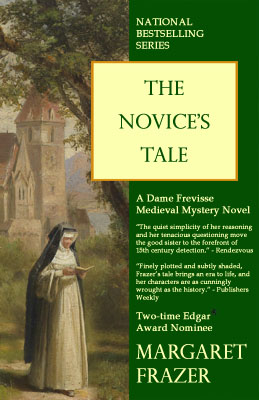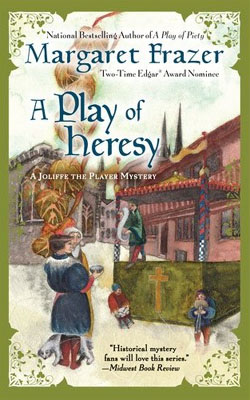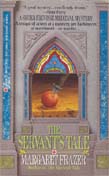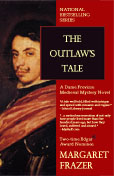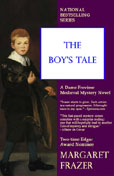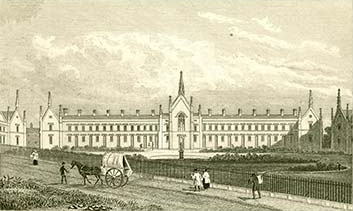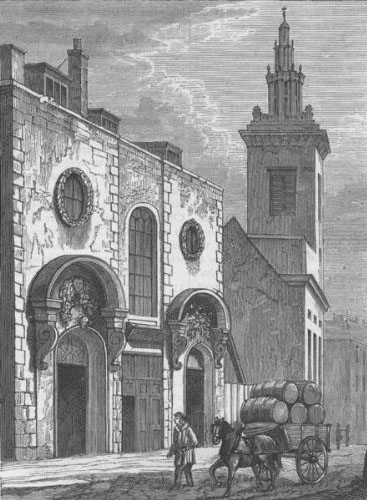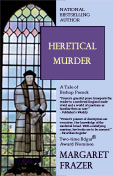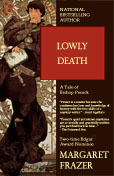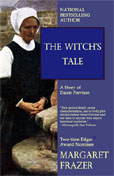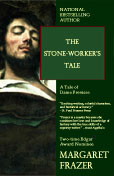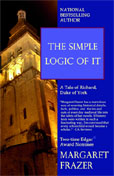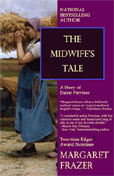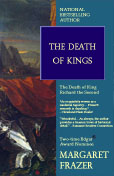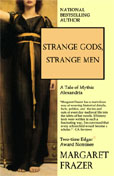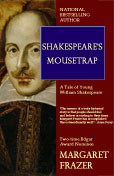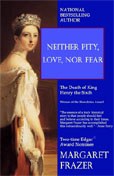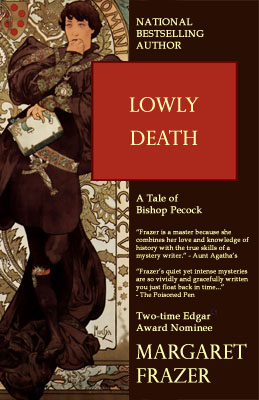If you’ve living in the UK, Germany, France, or anywhere outside of the United States or Canada, The Novice’s Tale is now available for the Kindle! It can also be read on any iPad, Android, Windows PC, Mac, or Blackberry device using the free Kindle Reading Apps for those platforms.
Unfortunately, I don’t know when an e-book of The Novice’s Tale will be made available in the United States or Canada. I don’t control those rights, so it’s up to the publisher to make those decisions. This will also, unfortunately, limit your ability to buy the e-book from other booksellers. But The Novice’s Tale — like all the novels and short stories I control the rights to — is offered without DRM, making it very easy to convert to whatever formats you like best.
UNHOLY PASSIONS AND DEMONIC DEATH…
In the fair autumn of Our Lord’s grace 1431, the nuns of England’s St. Frideswide’s prepare for the simply ceremonies in which the saintly novice Thomasine will take her holy vows. But their quiet lives of beauty and prayer are thrown into chaos by the merciless arrival of Lady Ermentrude Fenner and her retinue of lusty men, sinful women, and baying hounds. The hard-drinking dowager even keeps a pet monkey for her amusement. She demands wine, a feast…
And her niece, the angelic Thomasine.
The lady desires to enrich herself and her reputation by arranging a marriage for the devout novice. She cares nothing for the panic and despair she leaves behind her.
But all her cruel and cunning schemes are brought to a sudden end with strange and most unnatural murder.
As suspicious eyes turn on the pious Thomasine, it falls to Sister Frevisse, hosteler of the priory and amateur detective, to unravel the webs of unholy passion and dark intrigue that entangle the novice and prove her innocence… or condemn her.
PRAISE FOR THE NOVICE’S TALE
“Frazer uses her extensive knowledge of the period to create an unusual plot … appealing characters and crisp writing.” – Los Angeles Times
“A fast-paced and seamless story.” – St. Paul Pioneer Press
In helping to ready The Novice’s Tale for release as an e-book in the UK, I had to read it for the first time in almost twenty years. I last read it in galley proofs not long before it was published. My very first galley proofs! For my very first published novel! Sixteen more Dame Frevisse books have followed, as well as Joliffe’s series and a number of short stories – keeping me busy going forward rather than looking back. So reading The Novice’s Tale now, after so long, was a strange experience. Here, when all those other books and stories were not even a glimmer in the back of my mind, was where all of them had begun. It’s good to know that reviewers have declared the series started well but grew stronger and better as it went on, but that is not the same as going back myself to where it began – to find so much I had forgotten from a story not read in almost two decades, and how much was familiar from the days I had afterward spent with Dame Frevisse and in St. Frideswide’s.
If you are making Frevisse’s acquaintance for the first time, welcome. If you have kept company with her for a long while and are now revisiting the beginning with me, welcome indeed.
– Margaret

